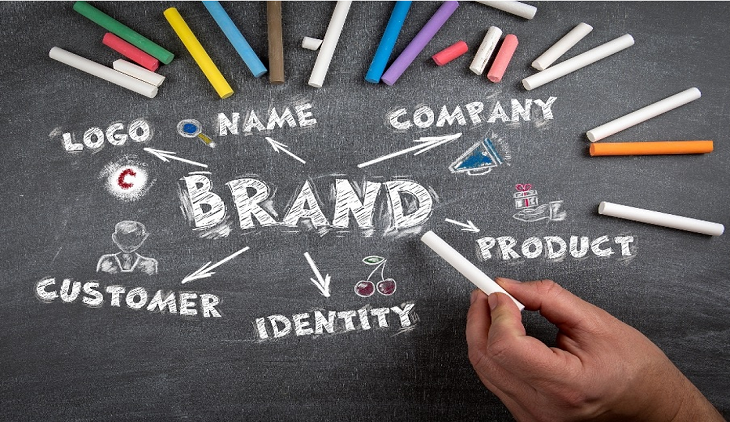
If a company creates an exciting and memorable brand, the public will be more comfortable recognizing its products or services and will clearly understand the value that the products can add to their lives.
Building an effective brand is vital to the success of any business. There are many different interpretations of the term «brand». For some, it is the relationship between a company and its current or potential customers, while others see it as a specific characteristic that differentiates a company from its competitors. In this article, we explain why building a brand is important, followed by a step-by-step approach that a company’s marketing team can follow when building a brand.
Why is it important to build a brand?
The way a company builds its brand will determine how the public perceives the company and its products. Successful brands can influence how people perceive a company’s name, history, logo, and marketing campaigns.
In many cases, the brand is just as important as the quality and price of a product. When people buy a product, they also buy the lifestyle that the product represents.
If a company creates an exciting and memorable brand, the public will more comfortably recognize its products or services and clearly understand the value that the products can add to their lives. Branding is also one of the most effective ways to gain customer trust.
How to build a brand
If you are part of a marketing team tasked with developing the company’s brand, you can follow these four steps:
- Determine our target audience.
- Position our product and business.
- Define the personality of our company.
- Choose a logo and slogan.
1. Determine our target audience
The first step to build a brand is determining your target audience. To create the preferred customer base:
Let’s determine who is most likely to buy the product. Let’s consider various factors such as age, gender, location, and income to create a demographic. If, for example, we plan to sell expensive and trendy eyewear, our target audience might be middle- or high-income individuals under the age of 40. However, if the product is a new sports drink, the audience will most likely be athletes.
Let’s check the statistics and sales data available. This information will be useful in providing us with valuable insights into consumer buying habits. Statistics can also help us decide if our company’s product will appeal to a certain demographic. For example, statistics could show that millennials tend to be very price conscious and prefer to buy products online. If necessary, we may also collect your own statistical data through surveys or contact a marketing company to collect data.
Let’s study similar companies. We can learn from established companies that offer similar products or services. Let’s try to gather more information about how they create marketing campaigns that target certain groups that buy their products the most. Compare data from different companies to develop a deep understanding of their brands.
Let’s talk to our target market. Let’s consider engaging with people who fit our company’s ideal customer profile to determine what their likes and needs are, as well as which brands appeal to them and why. We can create a more detailed outline of exactly what our clients want.
2. Position our product and business
Positioning a business involves deciding how to distinguish its products or services from other similar offerings on the market. To do so, we must first collect as much information as possible about our company’s direct competitors, such as details about their products, prices, and markets, as well as their marketing strategies.
Let’s try to determine possible deficiencies in our products, services or market areas that are not satisfying and use this information to our advantage.
After you’ve researched the competition, you need to develop a unique selling proposition. An USP (Unit Sales Price) is a concise statement that tells customers what the company offers. Our USP should highlight the features of our product that make it unique and add value for customers.
3. Define the personality of our company
To a large extent, a brand conveys the identity of the company. An important step in building a brand, then, involves determining the personality of the company.
In addition to a company’s products and services, its target audience will also help establish its personality. If your target audience is cycling enthusiasts, then most likely you want an active person.
Deciding on the company’s personality will require creative brainstorming with other members of the brand team. We can start the process thinking about the company as a person. For example, if the company is a backpacker, we could describe how this person looks and acts. Using descriptive words like «traveler,» «independent,» «revolutionary or «fun» will help the brand team verbalize their abstract thoughts.
We may also try to associate the product or company with any image or idea that occurs to us. For example, if the company produces running shoes, we can think of a gazelle and use this image to generate more ideas.
4. Choose a logo and tagline
An effective logo can make our brand visually appealing, while a successful tagline can help customers remember our product.
Logo: A logo conveys the image and personality of a brand. We may want to consult with a professional designer or branding agency during this process to ensure that the logo is elegant, effective, and well-crafted. A professional designer will advise us on aspects such as font, color, logo size, iconography and overall design. It will also help us design a logo that reflects or complements our brand.
Tagline – A tagline is a short, catchy phrase that can be used during marketing campaigns to give the brand that extra edge. It is not a permanent feature of our brand, so we may adjust and change it for new marketing campaigns.










Pingback: Andy Globe